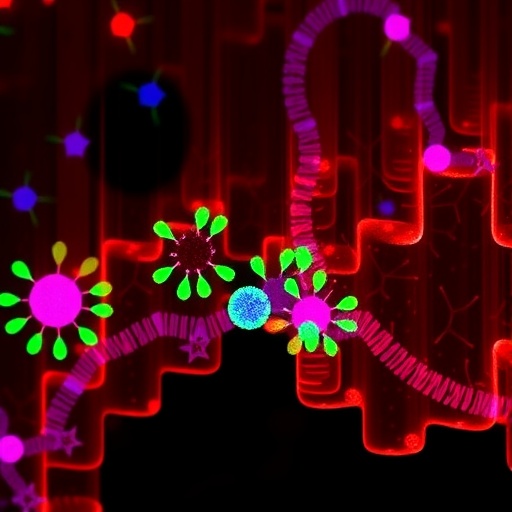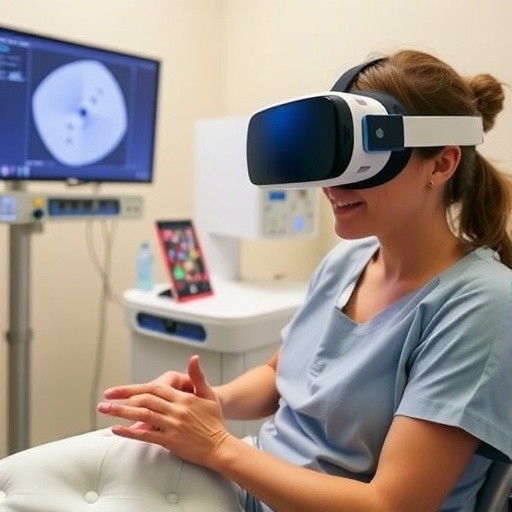In a groundbreaking study published by researchers from esteemed institutions, the focus on AGC2 modulators has opened new avenues for therapeutic advancements. The correction note issued sheds light on the intricate processes and methodologies employed to discover these modulators, demonstrating the importance of precision in scientific research. The discovery not only paves the way for novel treatments but also raises questions about the potential applications of AGC2 modulators in various medical fields. This innovative approach integrates docking studies, binding assays, and vesicle-based transport assays to unlock a deeper understanding of AGC2’s role in cellular functions.
To comprehend the significance of AGC2, it’s essential to delve into its biological framework. AGC2, a member of the AGC (PKA, PKG, and PKC) kinase family, is implicated in several critical cellular processes, including metabolism, cellular signal transduction, and gene expression. Understanding its modulation is crucial for developing therapeutic strategies targeting various ailments, especially metabolic disorders and cancers. This research exemplifies the potential of targeted therapy approaches that could revolutionize current treatment paradigms.
In their investigation, the research team utilized advanced molecular docking techniques to simulate and analyze the interactions between potential AGC2 modulators and the kinase itself. This computational approach allows for the identification of compounds that can effectively bind to AGC2, thereby influencing its activity. Molecular docking not only accelerates the discovery process but also significantly reduces the resource expenditure associated with traditional experimental methods. The results from these simulations provided vital insights into which compounds could serve as effective AGC2 modulators.
The effectiveness of these candidate modulators was subsequently assessed using binding assays, which are critical for confirming the interactions predicted by docking studies. These assays involve measuring the affinity of the modulators for AGC2, a process that demands precision and accuracy as it informs the viability of compounds for further development. The results highlighted several promising candidates that demonstrated significant binding affinity, warranting further exploration into their therapeutic potential.
What sets this research apart is the inclusion of vesicle-based transport assays, which simulate the cellular environment and help elucidate how these AGC2 modulators function within biological systems. By mimicking cellular uptake mechanisms, these assays provide a clearer picture of the modulators’ efficacy in a physiologically relevant context. This step is crucial, as it supports the notion that a compound’s effectiveness in vitro (in the lab) does not always translate to success in vivo (in living organisms).
The interplay between computational methods and empirical assays showcases an evolved scientific approach, reflecting modern trends in drug discovery. This integrated methodology is not just a trend, but a new paradigm in biotechnology and pharmacology, emphasizing the importance of multidisciplinary techniques. The initial phase of target identification and validation is followed by a deeper investigation into the modulators’ mechanisms of action, essential aspects that help translate findings from bench to bedside.
Furthermore, as the study progresses, the safety and efficacy profiles of these AGC2 modulators are assessed, a step that cannot be overlooked in therapeutic development. Understanding the side effects and interactions with other cellular pathways ensures a comprehensive evaluation of candidate compounds. This rigorous assessment is vital for the ultimate goal: introducing new therapies to clinics that can tangibly improve patient outcomes.
The capacity for AGC2 modulation to influence clinical outcomes is a significant focal point in this body of work. With AGC2 implicated in various diseases, from diabetes to certain types of cancer, the implications of successful modulators extend beyond a single disorder. This broad applicability suggests that AGC2 modulators could play a foundational role in developing a new generation of therapies tailored to individual patients, marking a shift towards personalized medicine.
The collaboration among the research team underscores an ongoing trend in science, where interdisciplinary work often yields superior outcomes. By combining expertise across disciplines—computational biology, molecular pharmacology, and biochemistry—the researchers were able to achieve results that might not have been possible within the confines of a single specialty. This collaborative spirit reflects a broader movement within the scientific community to foster innovation through teamwork and shared knowledge.
Research publications are transformative tools in the dissemination of scientific advancements. As findings circulate within the academic and medical communities, they have the potential to catalyze further research, leading to a cascade of discoveries. The study’s emphasis on AGC2 modulators is likely to inspire similar investigations, fostering an environment of inquiry that could yield additional breakthroughs in kinase-related therapies.
The future directions proposed following this research are as exciting as the findings themselves. The identification of promising AGC2 modulators has set the stage for subsequent studies aimed at understanding their full therapeutic potential. Prospective clinical trials will be crucial in determining the safety and effectiveness of these compounds in diverse patient populations, as these modulators could very well represent a key advancement in treatment modalities.
As the knowledge surrounding AGC2 continues to evolve, it opens doors not just for drug development, but also for understanding the intricacies of cellular signaling networks. This research contributes to the framework of information that underpins our comprehension of human biology and disease. The convergence of technology and rigorous laboratory studies heralds an era where precision medicine becomes an achievable reality, influenced by rigorous discoveries such as these.
In summary, the revelation of therapeutic AGC2 modulators through a combined approach showcases the power of contemporary research methodologies and collaboration. The implications of this work are far-reaching, hinting at a future where these compounds might transform treatment landscapes for numerous diseases. The commitment of researchers to explore the depths of kinase modulation could similarly deepen our understanding of complex physiological processes, driving future innovation in pharmacotherapy.
As we look forward to the continued exploration of AGC2 and its therapeutic modulators, the hope is to see these findings translate into clinical realities that improve lives. With each new discovery, the quest for effective treatments gains momentum, illuminating paths that once seemed shrouded in scientific uncertainty. The research into AGC2 modulators, then, is not just about uncovering molecules; it is about ushering in a new hope for patients and redefining the boundaries of medical treatment.
Subject of Research: AGC2 Modulators and their therapeutic implications
Article Title: Correction: Discovery of therapeutic AGC2 modulators by combining docking, binding, and vesicle-based transport assays.
Article References:
Beltrame, L.C., Todisco, S., Francavilla, A.L. et al. Correction: Discovery of therapeutic AGC2 modulators by combining docking, binding, and vesicle-based transport assays.
J Transl Med 23, 1194 (2025). https://doi.org/10.1186/s12967-025-07285-6
Image Credits: AI Generated
DOI:
Keywords: AGC2 modulators, therapeutic discovery, drug development, molecular docking, binding assays, vesicle-based transport assays, personalized medicine, kinase pathways
Tags: AGC kinase familyAGC2 cellular functionsAGC2 modulatorsbinding assays in pharmacologycellular signal transductioninnovative assays for drug discoverymolecular docking techniquesnovel treatments for metabolic disordersprecision in scientific researchtargeted therapy in cancertherapeutic advancements in AGC2vesicle-based transport assays





